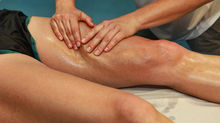The History of Pilates
- The Studio Team
- May 12, 2020
- 2 min read
Perhaps you're new to Pilates or perhaps you have been planking, bridging and finding tabletop for years. Have you ever wondered how Pilates started? Who came up with the design of the reformer and all the other tortuous-looking equipment that we all know and love? Following International Pilates Day last week, it seems like the perfect time to dive into the origins of Pilates.
It all started with a man named Joseph Pilates. Born in Germany in 1883, he was frequently ill and consequently frail as a child. Out of determination to overcome his ailments and to build strength and resilience, Pilates dedicated himself to gymnastics, bodybuilding, yoga and martial arts.
As a German citizen living in the UK Pilates was sent to an Internment camp during World War 1, where he worked as an orderly in a hospital in the Isle of Man. During his time there, Pilates insisted that patients participate in daily exercise routines, a method he named ‘Contrology’ to maintain not only their physical health, but also mental well-being. For those who were too injured or weak to get out of bed, he attached bed springs to the bedframe to provide resistance exercises. This makeshift equipment is where the design of the reformer sprung from. Next time you jump on a piece of pilates equipment take a look and the foundations of a hospital bed might just spring to mind.

Pilates returned to Germany briefly following the end of WW1 before immigrating to America in 1925, meeting his future wife Clara en route to the USA. The couple opened their first studio in New York and continued to teach Contrology; the art of control over mind and body in equal measure, well into their 80s.
Pilates’ method brought the awareness of breath to focus and the importance of strengthening the core postural muscles. This method became popular within the New York dance community as it offered a way to improve technique and recover from injury. Pilates wrote 2 books Return to Life through Contrology and Your Health, and continued to develop and refine designs for Pilates equipment including the Reformer, Wunda Chair, Trapeze Table and Ladder Barrel.
It wasn’t until his death in 1967 that his exercise methods were referred to as Pilates. Joe and Clara mentored students who went on to teach Pilates’, which has allowed his legacy to continue to grow, evolve and benefit so many people around the world.
A truly wonderful and resilient legacy!






























Comments